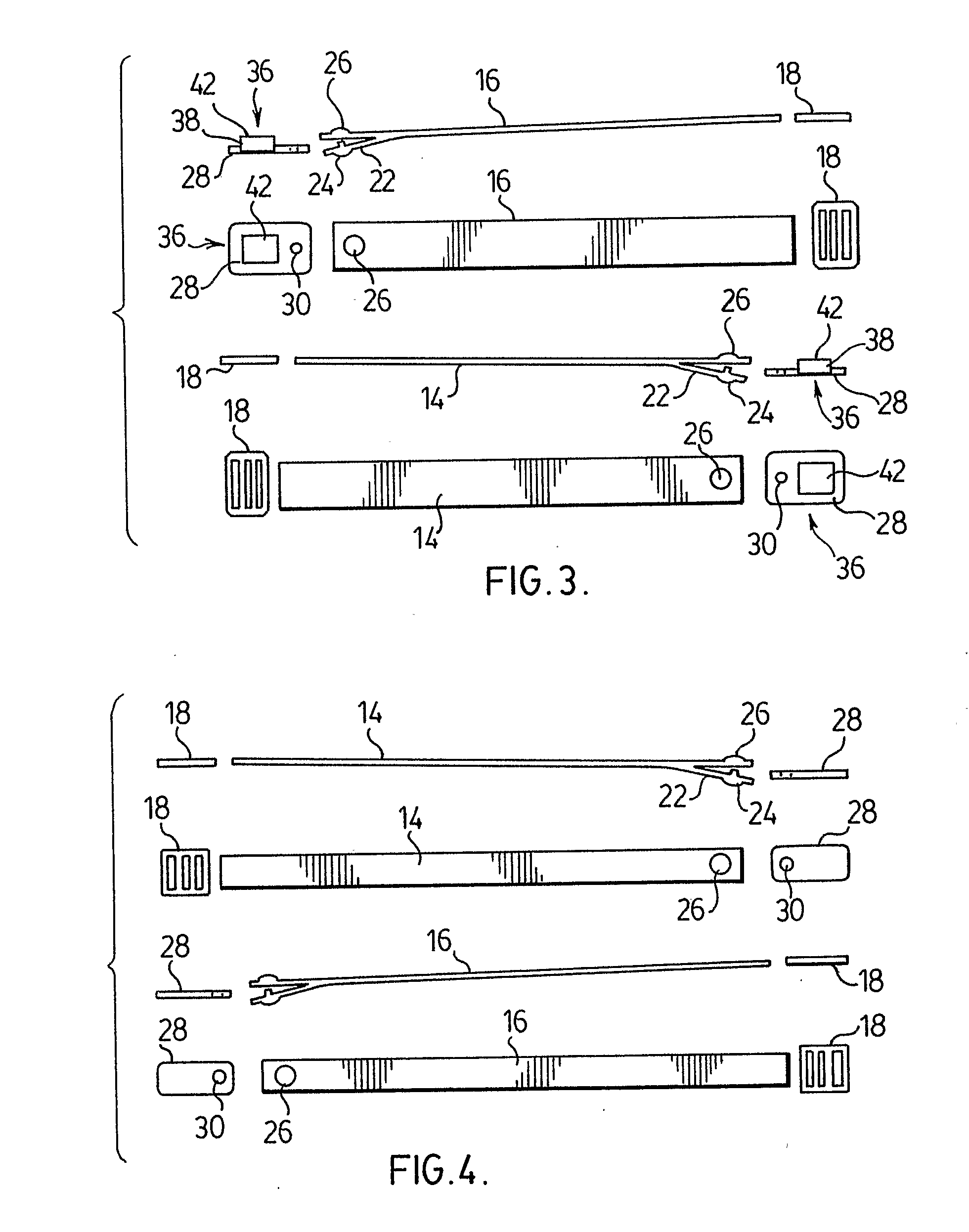Breathing Assistance Device
a technology of breathing assistance and dilators, which is applied in the field of mechanical devices, can solve the problems of snoring, snoring, and sleep interruption, and achieve the effects of improving sinus drainage, reducing snoring, and small cos
- Summary
- Abstract
- Description
- Claims
- Application Information
AI Technical Summary
Benefits of technology
Problems solved by technology
Method used
Image
Examples
Embodiment Construction
[0026]FIGS. 1 and 2 are elevational side views of a person's face and the right and left sides of a breathing assistance device 10. Breathing assistance device 10 comprises a resiliently stretchable band member 12. Band member 12 is comprised of a resiliently stretchable first band 14 and a resiliently stretchable second band 16, each being woven, wide elastic bands made of nylon and Lycra. Portions of first band 14 and second band 16 mutually overlap, and are adjustably connected with a plastic adjustable clip member 18. Adjustable clip member 18 functions to clip portions of first band 14 and second band 16 together, while enabling first band 14 and second band 16 to have adjustable amounts of overlap. The adjustable amount of overlap is provided to enable the person using breathing assistance device 10 to select a suitable unstretched length of band member 12.
[0027]Connected to each of the two ends of band member 12, opposite the overlapping portions of first band 14 and second b...
PUM
 Login to View More
Login to View More Abstract
Description
Claims
Application Information
 Login to View More
Login to View More - R&D
- Intellectual Property
- Life Sciences
- Materials
- Tech Scout
- Unparalleled Data Quality
- Higher Quality Content
- 60% Fewer Hallucinations
Browse by: Latest US Patents, China's latest patents, Technical Efficacy Thesaurus, Application Domain, Technology Topic, Popular Technical Reports.
© 2025 PatSnap. All rights reserved.Legal|Privacy policy|Modern Slavery Act Transparency Statement|Sitemap|About US| Contact US: help@patsnap.com



